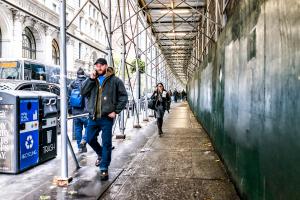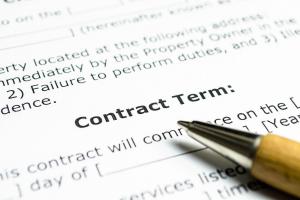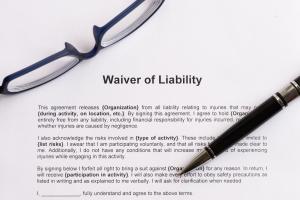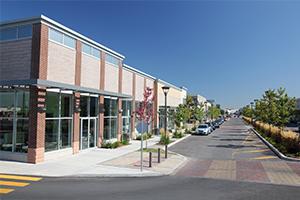Building and property managers and the New York Labor Law

The New York Labor Law addresses the liability of building owners and property managers for injuries sustained by employees, contractors and employees hired by contractors who make repairs and/or improvements to your property. This includes contractors hired by your tenants. This also includes those hired to do repairs such as an uninsured handyman.[3] The New York Labor Law holds the building owner or property manager strictly liable for the injuries to a contractor or their employees resulting from anything involving gravity. This could be a fall or being struck by falling items on your property while performing repairs and/or improvements. This could also mean a trip and fall from a sidewalk crack or pothole.[2]
Some additional considerations:
- There is no minimum height to define how far a victim could fall: a fall can be 20 feet or 2 feet.
- Can involve a fall from heights or a fall on the ground, such as falling in a pothole or down a slope.
- Applies to all accidents occurring within the state boundaries, regardless of whether the worker and/or the employer are NY residents.
- Includes anyone who has an ownership right to the property
- Includes any party who initiates a work project, such as tenant who remodels leased space or grantee of easement who enters property to make repairs.
- Includes all types of contractors such as general contractors, subcontractors, sole proprietors, independents or others who have been assigned, or took on the obligation to perform the work, even if they delegated it to another before the injury occurred.
Claims and references under the scaffolding law are increasing as are awards granted to plaintiffs. It is not uncommon for awards to reach $2.5 million per claim.[1]
How can you help protect your company from labor law claims?
When hiring a contractor, ALWAYS:
- Consult an attorney familiar with NY construction contract law for specific legal advice, and have your attorney review the contract language, including any hold harmless and indemnification clauses, to ensure that the contract best meets your needs.
- Be sure the contractor’s general liability policy is for at least $1,000,000 or more per occurrence, depending upon the circumstances. You should also be named as an Additional Insured on the contractor’s general liability coverage, making you an additional insured for premises/operations and products/completed operations on a primary and noncontributory basis. Further, the subcontractor’s insurance should be from an insurance carrier “admitted” to do business in New York State and carry a minimum of an AM Best rating of A-. Consult with your insurance agent for more information about insurance requirements.
- Before the work is started, always have your contractor provide you with a Certificate of Insurance for General Liability and Workers’ Compensation. The Certificate of Insurance should name you, the building owner or property manager, as an Additional Insured on the Contractor’s policy.
- In addition, the contract should state that it is the responsibility of the contractor to maintain a safe workplace. Never allow a contractor to start work on your property without a written contract that includes indemnification for all claims arising out of the work.
- Never loan or allow a contractor to use your ladders or tools. All equipment needed to complete the repair and/or improvement is the responsibility of the Contractor.
- Avoid supervising any work that you hired a contractor to perform. Offering specific directions to an employee of the contractor could jeopardize the “hold harmless provision” of the contract you entered into with the contractor.
- Require the contractor you hire to contractually prohibit subcontracting to others without prior written approval and complete replication of CRT requirements.
When hiring a contractor, NEVER:
- Hire ANYONE without a written contract. You should consult with an attorney for the specific requirements necessary.
- Have leases developed without the guidance of an attorney familiar with NY state laws.
As a property owner:
- Make sure you have solid lease agreements with your tenants. Consult with your attorneys to ensure you have all the legal protections necessary.
- Ensure you also maintain a current Certificate of Insurance for your tenants. The Certificate of Insurance should have you and/or the building manager named as an Additional Insured on your tenant’s policy. Also, a diary system is needed for tracking policy renewal dates to avoid any missed renewal cycles.
References
[1] The Costs of Labor Law 240 on New York’s Economy and Public Infrastructure, Final Report to New York Civil Justice Institute , December 31, 2013, Submitted by: Michael R. Hattery, PhD , Director of Local Government Studies, The Nelson A. Rockefeller Institute of Government, University at Albany, State University of New York , 411 State Street Albany, NY 12203.
[2[New York City Administrative Code Sidewalk Rules, https://www1.nyc.gov/html/dot/html/infrastructure/19-152.shtml.
[3] New York City Labor Law, http://public.leginfo.state.ny.us/lawssrch.cgi?NVLWO:, search LAB-Article 10-240.
This material is provided for informational purposes only and does not provide any coverage or guarantee loss prevention. The examples in this material are provided as hypothetical and for illustration purposes only. The Hanover Insurance Company and its affiliates and subsidiaries (“The Hanover”) specifically disclaim any warranty or representation that acceptance of any recommendations contained herein will make any premises, or operation safe or in compliance with any law or regulation. By providing this information to you, The Hanover does not assume (and specifically disclaims) any duty, undertaking or responsibility to you. The decision to accept or implement any recommendation(s) or advice contained in this material must be made by you.
171-10075 LC 2020-505
Related resources
Building and property managers and the New York Labor Law
The New York Labor Law addresses the liability of building owners and property managers for injuries sustained by employees, contractors and employees hired by contractors who make repairs and/or improvements to your property. This includes contractors hired by your tenants. This also includes those hired to do repairs such as an uninsured handyman.[3] The New York Labor Law holds the building owner or property manager strictly liable for the injuries to a contractor or their employees resulting from anything involving gravity. This could be a fall or being struck by falling items on your property while performing repairs and/or improvements. This could also mean a trip and fall from a sidewalk crack or pothole.[2]
Some additional considerations:
- There is no minimum height to define how far a victim could fall: a fall can be 20 feet or 2 feet.
- Can involve a fall from heights or a fall on the ground, such as falling in a pothole or down a slope.
- Applies to all accidents occurring within the state boundaries, regardless of whether the worker and/or the employer are NY residents.
- Includes anyone who has an ownership right to the property
- Includes any party who initiates a work project, such as tenant who remodels leased space or grantee of easement who enters property to make repairs.
- Includes all types of contractors such as general contractors, subcontractors, sole proprietors, independents or others who have been assigned, or took on the obligation to perform the work, even if they delegated it to another before the injury occurred.
Claims and references under the scaffolding law are increasing as are awards granted to plaintiffs. It is not uncommon for awards to reach $2.5 million per claim.[1]
How can you help protect your company from labor law claims?
When hiring a contractor, ALWAYS:
- Consult an attorney familiar with NY construction contract law for specific legal advice, and have your attorney review the contract language, including any hold harmless and indemnification clauses, to ensure that the contract best meets your needs.
- Be sure the contractor’s general liability policy is for at least $1,000,000 or more per occurrence, depending upon the circumstances. You should also be named as an Additional Insured on the contractor’s general liability coverage, making you an additional insured for premises/operations and products/completed operations on a primary and noncontributory basis. Further, the subcontractor’s insurance should be from an insurance carrier “admitted” to do business in New York State and carry a minimum of an AM Best rating of A-. Consult with your insurance agent for more information about insurance requirements.
- Before the work is started, always have your contractor provide you with a Certificate of Insurance for General Liability and Workers’ Compensation. The Certificate of Insurance should name you, the building owner or property manager, as an Additional Insured on the Contractor’s policy.
- In addition, the contract should state that it is the responsibility of the contractor to maintain a safe workplace. Never allow a contractor to start work on your property without a written contract that includes indemnification for all claims arising out of the work.
- Never loan or allow a contractor to use your ladders or tools. All equipment needed to complete the repair and/or improvement is the responsibility of the Contractor.
- Avoid supervising any work that you hired a contractor to perform. Offering specific directions to an employee of the contractor could jeopardize the “hold harmless provision” of the contract you entered into with the contractor.
- Require the contractor you hire to contractually prohibit subcontracting to others without prior written approval and complete replication of CRT requirements.
When hiring a contractor, NEVER:
- Hire ANYONE without a written contract. You should consult with an attorney for the specific requirements necessary.
- Have leases developed without the guidance of an attorney familiar with NY state laws.
As a property owner:
- Make sure you have solid lease agreements with your tenants. Consult with your attorneys to ensure you have all the legal protections necessary.
- Ensure you also maintain a current Certificate of Insurance for your tenants. The Certificate of Insurance should have you and/or the building manager named as an Additional Insured on your tenant’s policy. Also, a diary system is needed for tracking policy renewal dates to avoid any missed renewal cycles.
References
[1] The Costs of Labor Law 240 on New York’s Economy and Public Infrastructure, Final Report to New York Civil Justice Institute , December 31, 2013, Submitted by: Michael R. Hattery, PhD , Director of Local Government Studies, The Nelson A. Rockefeller Institute of Government, University at Albany, State University of New York , 411 State Street Albany, NY 12203.
[2[New York City Administrative Code Sidewalk Rules, https://www1.nyc.gov/html/dot/html/infrastructure/19-152.shtml.
[3] New York City Labor Law, http://public.leginfo.state.ny.us/lawssrch.cgi?NVLWO:, search LAB-Article 10-240.
This material is provided for informational purposes only and does not provide any coverage or guarantee loss prevention. The examples in this material are provided as hypothetical and for illustration purposes only. The Hanover Insurance Company and its affiliates and subsidiaries (“The Hanover”) specifically disclaim any warranty or representation that acceptance of any recommendations contained herein will make any premises, or operation safe or in compliance with any law or regulation. By providing this information to you, The Hanover does not assume (and specifically disclaims) any duty, undertaking or responsibility to you. The decision to accept or implement any recommendation(s) or advice contained in this material must be made by you.
171-10075 LC 2020-505
Related resources
Building and property managers and the New York Labor Law
The New York Labor Law addresses the liability of building owners and property managers for injuries sustained by employees, contractors and employees hired by contractors who make repairs and/or improvements to your property. This includes contractors hired by your tenants. This also includes those hired to do repairs such as an uninsured handyman.[3] The New York Labor Law holds the building owner or property manager strictly liable for the injuries to a contractor or their employees resulting from anything involving gravity. This could be a fall or being struck by falling items on your property while performing repairs and/or improvements. This could also mean a trip and fall from a sidewalk crack or pothole.[2]
Some additional considerations:
- There is no minimum height to define how far a victim could fall: a fall can be 20 feet or 2 feet.
- Can involve a fall from heights or a fall on the ground, such as falling in a pothole or down a slope.
- Applies to all accidents occurring within the state boundaries, regardless of whether the worker and/or the employer are NY residents.
- Includes anyone who has an ownership right to the property
- Includes any party who initiates a work project, such as tenant who remodels leased space or grantee of easement who enters property to make repairs.
- Includes all types of contractors such as general contractors, subcontractors, sole proprietors, independents or others who have been assigned, or took on the obligation to perform the work, even if they delegated it to another before the injury occurred.
Claims and references under the scaffolding law are increasing as are awards granted to plaintiffs. It is not uncommon for awards to reach $2.5 million per claim.[1]
How can you help protect your company from labor law claims?
When hiring a contractor, ALWAYS:
- Consult an attorney familiar with NY construction contract law for specific legal advice, and have your attorney review the contract language, including any hold harmless and indemnification clauses, to ensure that the contract best meets your needs.
- Be sure the contractor’s general liability policy is for at least $1,000,000 or more per occurrence, depending upon the circumstances. You should also be named as an Additional Insured on the contractor’s general liability coverage, making you an additional insured for premises/operations and products/completed operations on a primary and noncontributory basis. Further, the subcontractor’s insurance should be from an insurance carrier “admitted” to do business in New York State and carry a minimum of an AM Best rating of A-. Consult with your insurance agent for more information about insurance requirements.
- Before the work is started, always have your contractor provide you with a Certificate of Insurance for General Liability and Workers’ Compensation. The Certificate of Insurance should name you, the building owner or property manager, as an Additional Insured on the Contractor’s policy.
- In addition, the contract should state that it is the responsibility of the contractor to maintain a safe workplace. Never allow a contractor to start work on your property without a written contract that includes indemnification for all claims arising out of the work.
- Never loan or allow a contractor to use your ladders or tools. All equipment needed to complete the repair and/or improvement is the responsibility of the Contractor.
- Avoid supervising any work that you hired a contractor to perform. Offering specific directions to an employee of the contractor could jeopardize the “hold harmless provision” of the contract you entered into with the contractor.
- Require the contractor you hire to contractually prohibit subcontracting to others without prior written approval and complete replication of CRT requirements.
When hiring a contractor, NEVER:
- Hire ANYONE without a written contract. You should consult with an attorney for the specific requirements necessary.
- Have leases developed without the guidance of an attorney familiar with NY state laws.
As a property owner:
- Make sure you have solid lease agreements with your tenants. Consult with your attorneys to ensure you have all the legal protections necessary.
- Ensure you also maintain a current Certificate of Insurance for your tenants. The Certificate of Insurance should have you and/or the building manager named as an Additional Insured on your tenant’s policy. Also, a diary system is needed for tracking policy renewal dates to avoid any missed renewal cycles.
References
[1] The Costs of Labor Law 240 on New York’s Economy and Public Infrastructure, Final Report to New York Civil Justice Institute , December 31, 2013, Submitted by: Michael R. Hattery, PhD , Director of Local Government Studies, The Nelson A. Rockefeller Institute of Government, University at Albany, State University of New York , 411 State Street Albany, NY 12203.
[2[New York City Administrative Code Sidewalk Rules, https://www1.nyc.gov/html/dot/html/infrastructure/19-152.shtml.
[3] New York City Labor Law, http://public.leginfo.state.ny.us/lawssrch.cgi?NVLWO:, search LAB-Article 10-240.
This material is provided for informational purposes only and does not provide any coverage or guarantee loss prevention. The examples in this material are provided as hypothetical and for illustration purposes only. The Hanover Insurance Company and its affiliates and subsidiaries (“The Hanover”) specifically disclaim any warranty or representation that acceptance of any recommendations contained herein will make any premises, or operation safe or in compliance with any law or regulation. By providing this information to you, The Hanover does not assume (and specifically disclaims) any duty, undertaking or responsibility to you. The decision to accept or implement any recommendation(s) or advice contained in this material must be made by you.
171-10075 LC 2020-505
Related resources
Building and property managers and the New York Labor Law
The New York Labor Law addresses the liability of building owners and property managers for injuries sustained by employees, contractors and employees hired by contractors who make repairs and/or improvements to your property. This includes contractors hired by your tenants. This also includes those hired to do repairs such as an uninsured handyman.[3] The New York Labor Law holds the building owner or property manager strictly liable for the injuries to a contractor or their employees resulting from anything involving gravity. This could be a fall or being struck by falling items on your property while performing repairs and/or improvements. This could also mean a trip and fall from a sidewalk crack or pothole.[2]
Some additional considerations:
- There is no minimum height to define how far a victim could fall: a fall can be 20 feet or 2 feet.
- Can involve a fall from heights or a fall on the ground, such as falling in a pothole or down a slope.
- Applies to all accidents occurring within the state boundaries, regardless of whether the worker and/or the employer are NY residents.
- Includes anyone who has an ownership right to the property
- Includes any party who initiates a work project, such as tenant who remodels leased space or grantee of easement who enters property to make repairs.
- Includes all types of contractors such as general contractors, subcontractors, sole proprietors, independents or others who have been assigned, or took on the obligation to perform the work, even if they delegated it to another before the injury occurred.
Claims and references under the scaffolding law are increasing as are awards granted to plaintiffs. It is not uncommon for awards to reach $2.5 million per claim.[1]
How can you help protect your company from labor law claims?
When hiring a contractor, ALWAYS:
- Consult an attorney familiar with NY construction contract law for specific legal advice, and have your attorney review the contract language, including any hold harmless and indemnification clauses, to ensure that the contract best meets your needs.
- Be sure the contractor’s general liability policy is for at least $1,000,000 or more per occurrence, depending upon the circumstances. You should also be named as an Additional Insured on the contractor’s general liability coverage, making you an additional insured for premises/operations and products/completed operations on a primary and noncontributory basis. Further, the subcontractor’s insurance should be from an insurance carrier “admitted” to do business in New York State and carry a minimum of an AM Best rating of A-. Consult with your insurance agent for more information about insurance requirements.
- Before the work is started, always have your contractor provide you with a Certificate of Insurance for General Liability and Workers’ Compensation. The Certificate of Insurance should name you, the building owner or property manager, as an Additional Insured on the Contractor’s policy.
- In addition, the contract should state that it is the responsibility of the contractor to maintain a safe workplace. Never allow a contractor to start work on your property without a written contract that includes indemnification for all claims arising out of the work.
- Never loan or allow a contractor to use your ladders or tools. All equipment needed to complete the repair and/or improvement is the responsibility of the Contractor.
- Avoid supervising any work that you hired a contractor to perform. Offering specific directions to an employee of the contractor could jeopardize the “hold harmless provision” of the contract you entered into with the contractor.
- Require the contractor you hire to contractually prohibit subcontracting to others without prior written approval and complete replication of CRT requirements.
When hiring a contractor, NEVER:
- Hire ANYONE without a written contract. You should consult with an attorney for the specific requirements necessary.
- Have leases developed without the guidance of an attorney familiar with NY state laws.
As a property owner:
- Make sure you have solid lease agreements with your tenants. Consult with your attorneys to ensure you have all the legal protections necessary.
- Ensure you also maintain a current Certificate of Insurance for your tenants. The Certificate of Insurance should have you and/or the building manager named as an Additional Insured on your tenant’s policy. Also, a diary system is needed for tracking policy renewal dates to avoid any missed renewal cycles.
References
[1] The Costs of Labor Law 240 on New York’s Economy and Public Infrastructure, Final Report to New York Civil Justice Institute , December 31, 2013, Submitted by: Michael R. Hattery, PhD , Director of Local Government Studies, The Nelson A. Rockefeller Institute of Government, University at Albany, State University of New York , 411 State Street Albany, NY 12203.
[2[New York City Administrative Code Sidewalk Rules, https://www1.nyc.gov/html/dot/html/infrastructure/19-152.shtml.
[3] New York City Labor Law, http://public.leginfo.state.ny.us/lawssrch.cgi?NVLWO:, search LAB-Article 10-240.
This material is provided for informational purposes only and does not provide any coverage or guarantee loss prevention. The examples in this material are provided as hypothetical and for illustration purposes only. The Hanover Insurance Company and its affiliates and subsidiaries (“The Hanover”) specifically disclaim any warranty or representation that acceptance of any recommendations contained herein will make any premises, or operation safe or in compliance with any law or regulation. By providing this information to you, The Hanover does not assume (and specifically disclaims) any duty, undertaking or responsibility to you. The decision to accept or implement any recommendation(s) or advice contained in this material must be made by you.
171-10075 LC 2020-505






